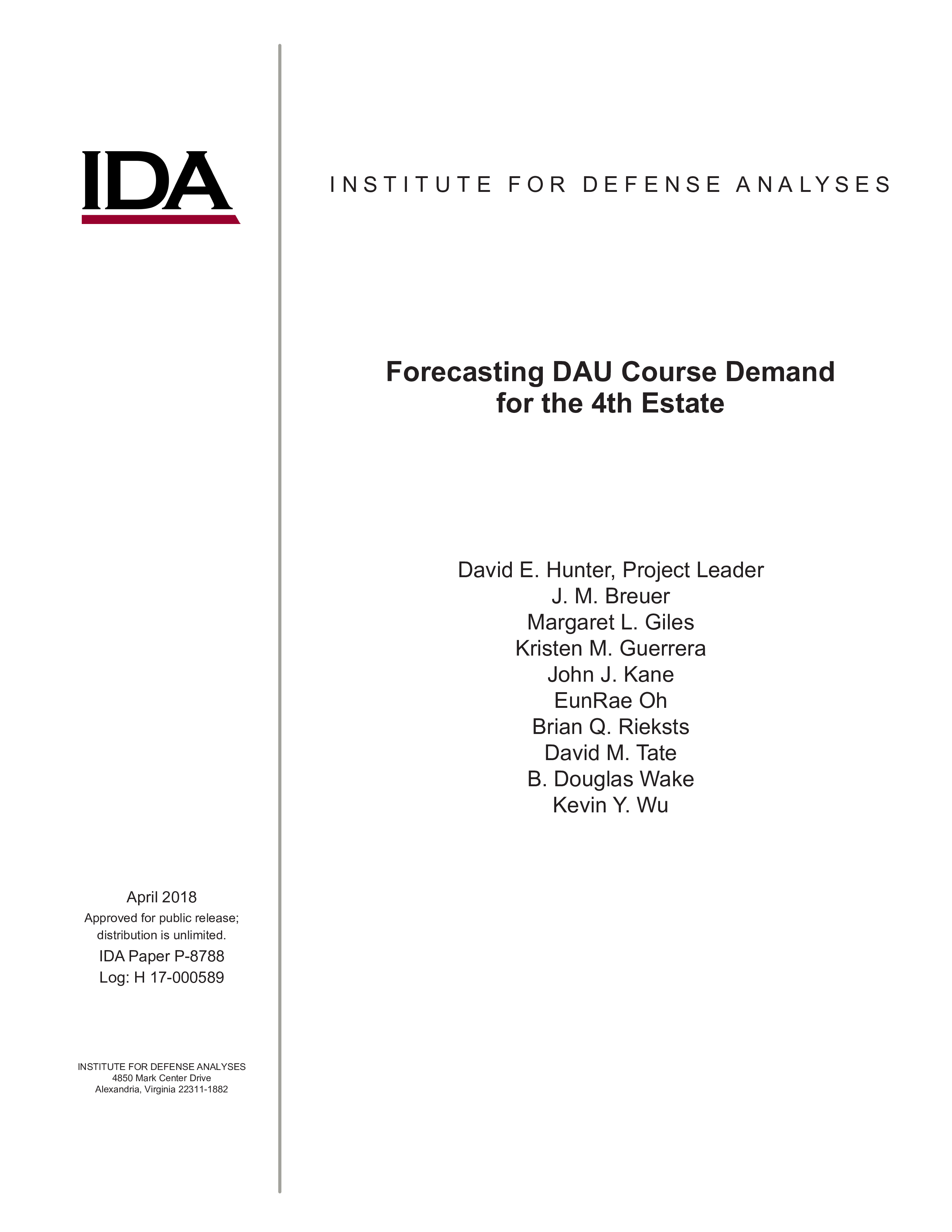The objective of this paper is to forecast Defense Acquisition University (DAU) course demand by civilian acquisition professionals in 4th Estate agencies. The forecasting model uses a two-stage approach to forecast demand. The first stage forecasts the workforce levels by cohort by first estimating attrition and promotions in the workforce using a machine learning algorithm called a gradient boosting machine. We then assume a one-for-one replacement of positions vacated using historical workforce data. The second stage forecasts the rates at which demand occurs by cohorts of the workforce using historical demand rates for the last three years available at the time of the forecast and assuming those average cohort demand rates hold for the future. We define workforce cohorts by combinations of career field, certification level required, agency, years of experience, and previous status (new hire/promotion). The forecasted total demand for each course is calculated by multiplying the workforce levels by the forecasted demand for the course by cohort. Benchmarking against 2015 and 2016 history, this methodology, developed by the Institute for Defense Analyses, increases forecasting accuracy by nearly 50 percent. For particular courses, we saw an improvement over the historical DAU methodology in 50 of the 65 courses. We embedded this methodology in a software tool that summarizes historical data, generates forecasts for future demand, and gives the user the capability to adjust the forecast based on user-defined input.

